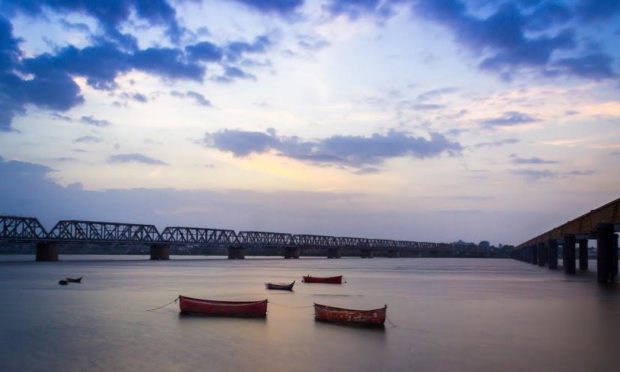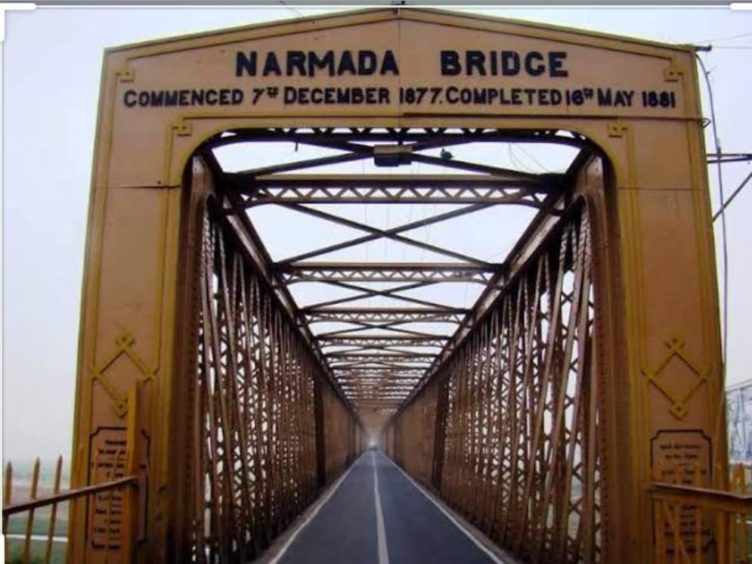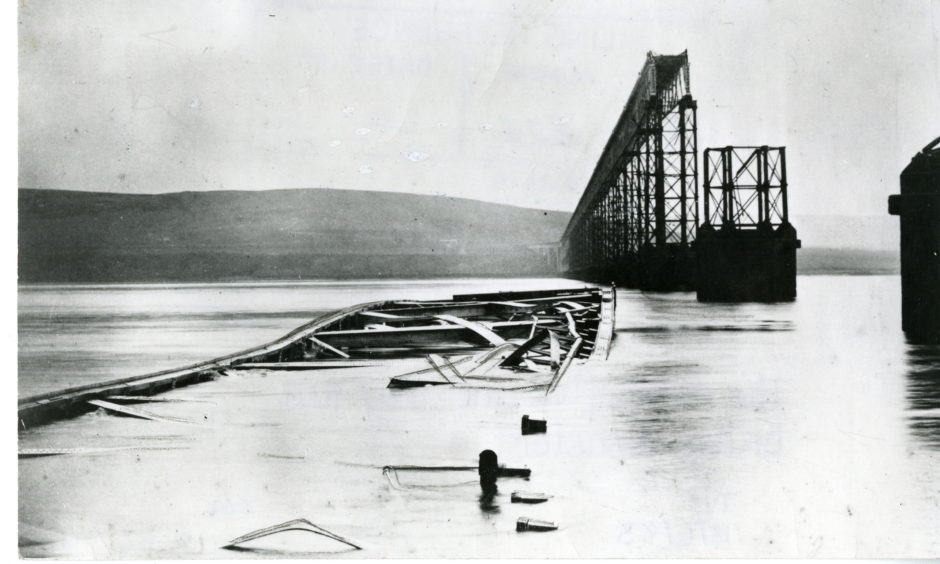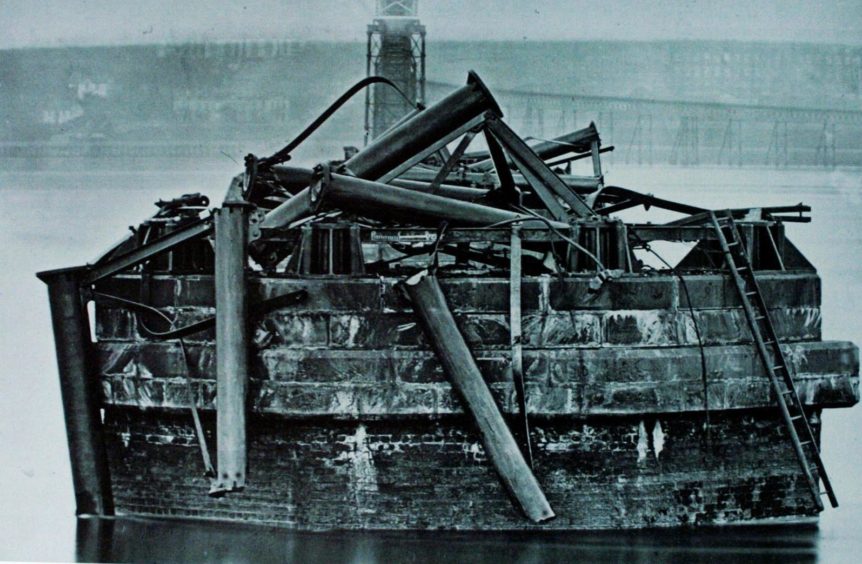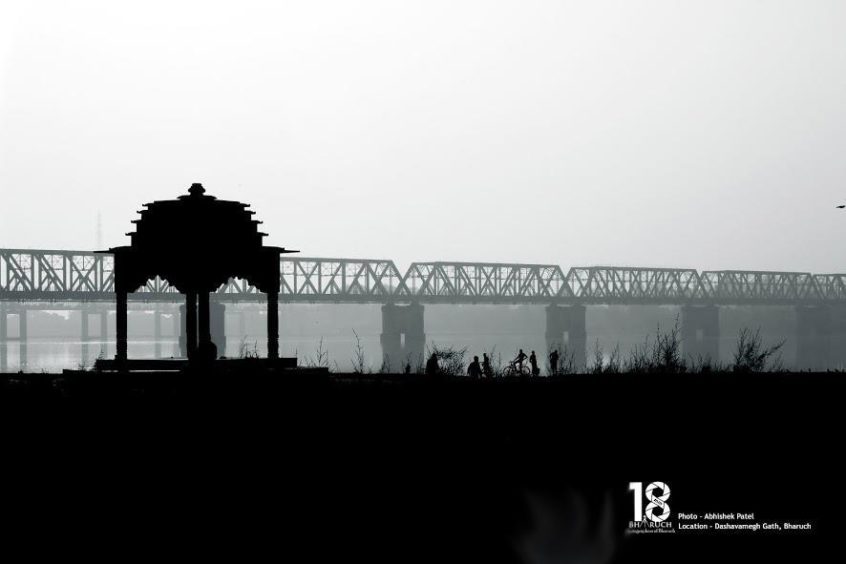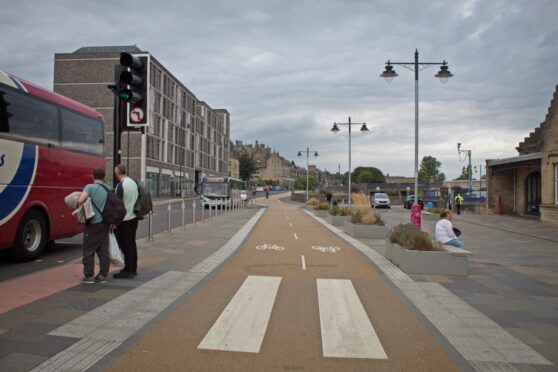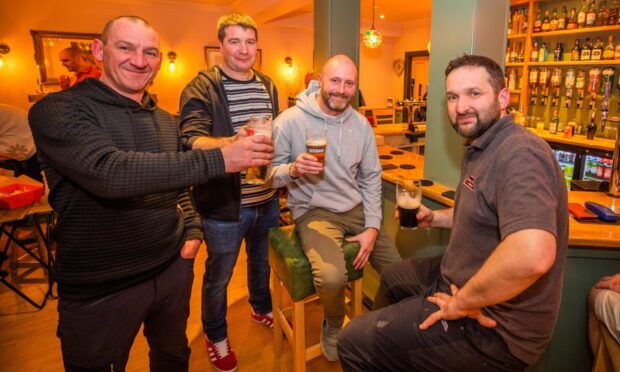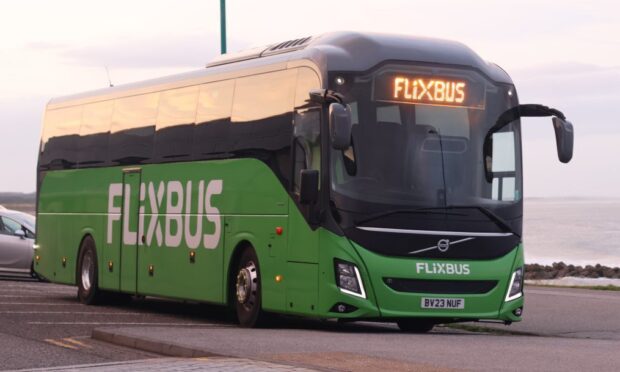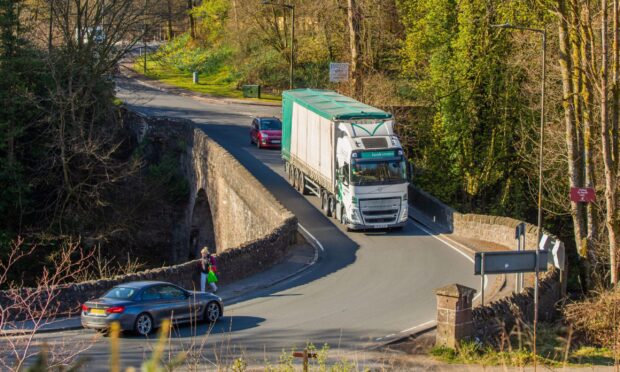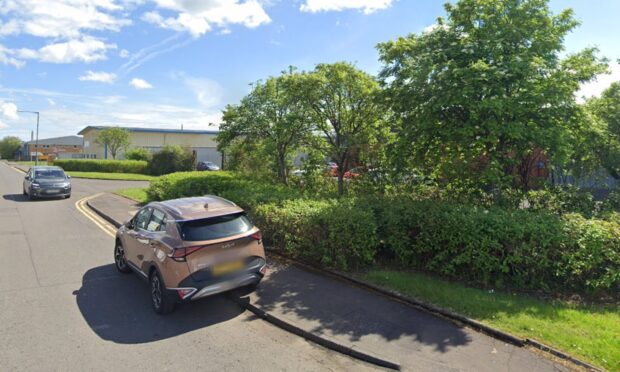The legacy of the ill-fated first Tay Rail Bridge lives on in western India.
The same iron from the doomed structure was used to construct the Golden Bridge which connects Ankleshwar to Bharuch.
The bridge across the Nerbudda River is as much a part of the rich history of Bharuch as its architectural and archaeological wonders.
The Golden Bridge got its name on account of the heavy expenditure incurred on building it more than seven times after it continued to get damaged due to heavy water flow from the Nerbudda River.
It was said that the cost was so high that the bridge could have been constructed in gold.
The original construction was started in 1861 and in 1863 the pillars got swept away.
Then five spans got washed away in the 1868 catastrophe when corpses and carcasses of cattle were washed down the Nerbudda and villagers were marooned during the biggest flood on record.
The same happened in 1871.
The next two years, the work that was done also got washed away when 25 of the 69 spans were carried away in a flood.
The British, who needed a bridge across Nerbudda to enable easier access for trade and administration offices in Mumbai, undertook the job in 1877.
The contract was made by the Bombay, Baroda, and Central India Railway Company and was designed by Sir John Hawkshaw whose many railway works took him to all parts of the world including Germany, Russia and Mauritius.
Teesside Iron and Engine Works were also the contractors for the principal iron work on the first Tay Rail Bridge which opened a year after work started in Bharuch.
Alarm bells were ringing in the House of Commons when the Tay Bridge collapsed in 1879 when the wind pulled down the iron girders like matchwood.
There were calls for the Indian Government to start an investigation as to the quality and kind of iron used for the bridge across the Nerbudda following the tragedy.
The Marquess of Hartington said: “In the report on Indian Railways for 1877 the name of the firm who contracted for the railway bridge across the Nerbudda River is correctly given, and the firm mentioned is the same as that which is stated to have been connected with the supply of the principal iron work of the Tay Bridge.
“The plans and specifications of the Nerbudda Bridge were prepared by Sir John Hawkshaw, and the whole process of supplying the iron work has been carefully watched and inspected under his directions.
“Upon the occurrence of the breakdown of the Tay Bridge, the directors of the company gave special directions to Sir John Hawkshaw to be most particular in carrying out the duty of inspection.
“No complaints have been received from India of the quality of the iron; but a second examination is made there, and severe tests are applied to the piers and the girders when placed in position.
“There can be no doubt that the engineers employed in designing and constructing bridges in India since the Tay Bridge disaster have been fully alive to the necessity of the most careful specifications being prepared, and of the most conclusive tests being applied to materials before they are accepted.”
A special report was also prepared on the bridge before it was opened for traffic following the concerns.
The bridge took three-and-a-half years to complete and eventually opened in 1881.
The new bridge over the Nerbudda was 4,687 feet long.
The whole cost of the £333,000 structure – with the exception of some £40,000 – was entirely met out of surplus earned by the Bombay, Baroda and Central India Railway over and above the amount required to meet the guaranteed interest.
A special train was put on from Bombay in the early hours of the morning to bring the invited guests to the official opening.
The train travelled to Bharuch where they stopped for breakfast before the arrival at Nerbudda which was greeted by cheers from a large crowd of natives who had gathered to watch the first train crossing the bridge.
There was a deep fringe of spectators on either side of the river and numerous flags were flying from every vantage point.
The guests got out to view the bridge and Colonel Hancock, the consulting engineer to government, carried out a formal inspection of the work.
The heat at this point of the day was described as very trying and newspaper reports suggested the guests were glad of a cold bath on their return to the station.
A social event followed the official opening which included speeches to mark the occasion.
A series of sheds had been fitted up as a drawing room, a retiring room for the gentlemen, and a dining room.
The chairman said the bridge was three-and-a-half times the length of the Charing Cross bridge, its foundations were twice as deep as the Charing Cross bridge; it was twice the height of the Charing Cross bridge; and the Charing Cross bridge was a very simple work in comparison with the great work which had been opened that day.
He said the bridge was the cheapest work of its kind in India, that the work was carried out below the estimate, and that its durability, as far as an engineer could give an opinion, was a matter of certainty.
“Of course these great works are subject to conditions of danger, which no human intelligence could fully appreciate, but we have the satisfaction of knowing that in this particular case, the bridge was designed by perhaps the most eminent living engineer in bridge construction, Sir John Hawkshaw,” he said.
“Sir John Hawkshaw, by his construction of bridges, has won himself a high position in the hierarchy of British rank.”
He said the original bridge was constructed in the early days of bridge engineering and at this time they had no information of the floods in the Nerbudda, which had so frequently taken away their works and caused interruption in the traffic.
He remembered that on one occasion somebody said: “The Nerbudda Bridge will go down again”, and his respected friend Colonel Hancock, saying: “If it does go down again, they will put it up again”.
The Golden Bridge has seen many floods and natural disasters like earthquakes and continues to provide daily transportation to the people of Ankleshwar and Bharuch.
At one time during World War Two financial crunch had even forced the government to decide on destroying the bridge for its iron, but the love of locals for the bridge saved it.
After independence it became part of the national highway and the rail tracks were pulled up.
Miss Bushra Contractor, a heritage lover from Bharuch in India, said the Golden Bridge is a very important bridge for the citizens of Bharuch and Ankleshwar.
She said: “Over the years its name has evolved from Nerbudda Bridge to Narmada Bridge, and now to the Golden Bridge, due to the cost of its construction!
“It’s more than 139 years old..and still counting.
“The bridge has undergone many disasters from floods to earthquakes and yet stands there holding its head high.
“During our childhood the Golden Bridge was just like any other bridge that we crossed to get to the other side.
“But what really thrilled us was the cool breeze skimming over our faces, and the spectacular scenic beauty.
“Another pleasant memory was that of throwing a coin, while crossing the Golden Bridge, in the holy water of the River Narmada, for good luck.
“As I grew older, I understood its awesome technical features and what a great part it played in the great revolution of infrastructure for India.
“Constructed by the British more than a century ago, one can observe parallel to the bridge, a railway line.
“This railway line was the connection from the port to Bharuch and the Golden Bridge was used to transport the goods from Bharuch.
“What makes it even more amazing is the fact that the iron used for the rail and road bridge has not corroded over the century and still works well and looks sturdy.
“The only major work undertaken by government was to put a tar road on it.
“The prosperity of Gujarat and industrial revolution for cotton and other goods were supported by these major engineering marvels built by the British.
“Today, it’s an experience to drive through the Golden Bridge at Bharuch.
“There is just enough room for two cars to pass each other and needs a very skilled driver to do it.
“Yet, there are very few accidents occurring on the bridge.
“It is an amazing experience that one must go through in their lifetime.”
Beautifully lit Golden bridge at night, Bharuch.
The bridge connects Ankleshwar to Bharuch, cities in Gujarat. It was built in1881 by the British, who needed a bridge across the Narmada River to create better access to trade & administration.#GujaratTourism #Architecture #History pic.twitter.com/SIyCvbE1Pa— Gujarat Tourism (@GujaratTourism) September 18, 2019
Railway expert John Clarke from railwaywondersoftheworld.com said there were some curious connections between the bridges.
He said: “The 1868 and 1871 floods presumably caused more casualties than the collapse of the Tay Bridge, tragedies that have not caught the popular imagination in the West in quite the same way as the Tay.
“I was also interested to learn that Hawkshaw was linked with both bridges and one wonders what design he would have come up with to replace the fallen Tay Bridge, had he replaced Sir Thomas Bouch.
“Another curious connection is that both bridges failed, were rebuilt, and lasted in the light of greater information concerning the effects of wind force and floods.”
